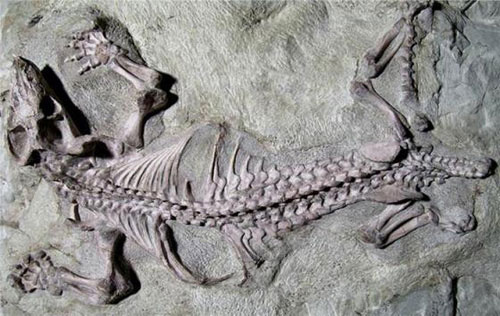Mammal ancestors take advantage of extinction events
The closest ancient relatives of the mammal species not only survived the mass extinction event 252 million years ago, but also flourished and flourished later.
Cynodont therapsid , ostensible mammals like shrews, managed to escape the great destruction of the Permian Age, clearing 90% of marine life and 70% of terrestrial species.

The skeleton of the cynodont Galesaurus planiceps - (Photo: Iziko Museums of South Africa)
'Mass extinctions often suffer from negative reviews. However, in this case, the cynodont therapsid, which was only a very small group before the extinction event, actually took advantage of the opportunity and was able to adapt to many conditions during the Cretaceous period. , from herbivores to carnivores , Red Orbit leads expert Marcello Ruta of Lincoln University (USA).
Cynodont is found in fossils mixed with many different species, including Morganucodon in England, Megazostrodon from South Africa and Bienotherium in China.
Cynodont has a large brain and is more likely to be hot-blooded, full-body fur ., all of which separate them from reptilian ancestors and contribute to the great success of the eminent species since then.
The level of cynodont diversity has increased with the recovery of life following the greatest destruction in Earth's history.
- Earth prospect when dinosaurs existed to modern times
- Mammals extinct due to the effects of climate change and humans
- Save the mermaids
- Discover the oldest mammal
- New report on mass extinction events in amphibians
- 25% of mammals are at risk of extinction
- Pangolin is in danger of extinction
- New discovery of the extinction of the Neanderthals
- Great extinction worldwide may take place in 2100
- Prehistoric beavers used to dominate the world after the dinosaur era
- The parasite is in danger of extinction due to climate change
- Reptiles in danger of extinction
 Discovered an ancient centipede fossil 99 million years old
Discovered an ancient centipede fossil 99 million years old Discovered bat-like dinosaurs in China
Discovered bat-like dinosaurs in China Discovered a 200-year-old bronze cannon of the coast
Discovered a 200-year-old bronze cannon of the coast Discover 305 million-year-old spider fossils
Discover 305 million-year-old spider fossils